Mid-Autumn Moon Viewing, or "Tsukimi," is a cherished autumn tradition in Japan. Alongside traditional Japanese dishes, you'll find an array of moon-themed foods at convenience stores and fast food chains during this season. In this article, we'll introduce the must-try foods for enjoying the Mid-Autumn Moon and delve into the origins of this cultural event.
What is Mid-Autumn Moon Viewing? A Brief History and How to Celebrate
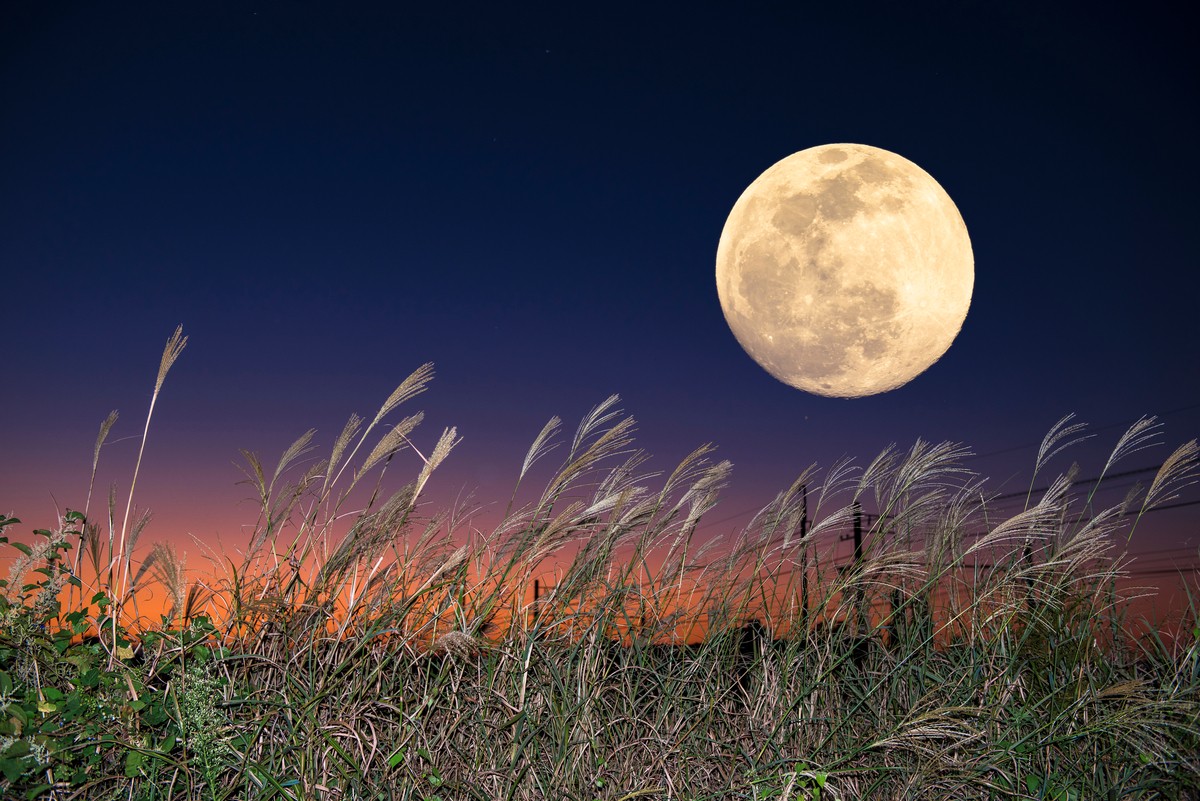
Mid-Autumn Moon Viewing, known as "Chūshū no Meigetsu," falls on the 15th day of the 8th lunar month. It's a traditional Japanese event where people admire the moon, which is believed to appear at its most beautiful during this time due to the clear autumn air and the moon's optimal position in the sky.
The custom of moon viewing is thought to have been introduced from China during the Heian period (794–1185), initially enjoyed as an elegant pastime by the aristocracy. However, by the Edo period (1603–1869), it had spread to the common people, becoming an occasion to offer prayers for a bountiful harvest and to express gratitude to the gods.
Did You Know There Are Three Opportunities for Moon Viewing?

While the "Jūgoya" (15th Night) of the Mid-Autumn Moon is the most well-known moon-viewing event, there are actually two more chances to admire the beautiful moon in the following months!
Lunar Calendar August 15: "Jūgoya" (Fifteenth Night)
The most well-known moon-viewing event, celebrated as "Chūshū no Meigetsu" (Mid-Autumn Moon). As it coincides with the rice harvest season, people offer rice ears and pampas grass to pray for a bountiful harvest while admiring the full moon.
Lunar Calendar September 13: "Jūsanya" (Thirteenth Night)
Taking place about a month after Jūgoya, this moon-viewing event is also called "Nochi no Tsuki" (The Later Moon). It is a celebration of the harvest of chestnuts and beans, hence the alternative names "Kuri Meigetsu" (Chestnut Moon) and "Mame Meigetsu" (Bean Moon). The unique feature of Jūsanya is the appreciation of the moon, which is slightly waning rather than a full moon.
Lunar Calendar October 10: "Tōka-ya" (Tenth Night)
This event marks the end of the autumn harvest, performed as a ritual to send the rice field deity back to the mountains after the rice harvest is complete.
The customs of Tōka-ya are primarily observed in Eastern Japan, including the Kanto and Koshinetsu regions. The specifics vary by region but generally include activities such as making rice cakes and offering scarecrows.
Autumn Delicacies! 5 Foods to Enjoy While Moon Viewing
Tsukimi Dango (Moon Viewing Dumplings)
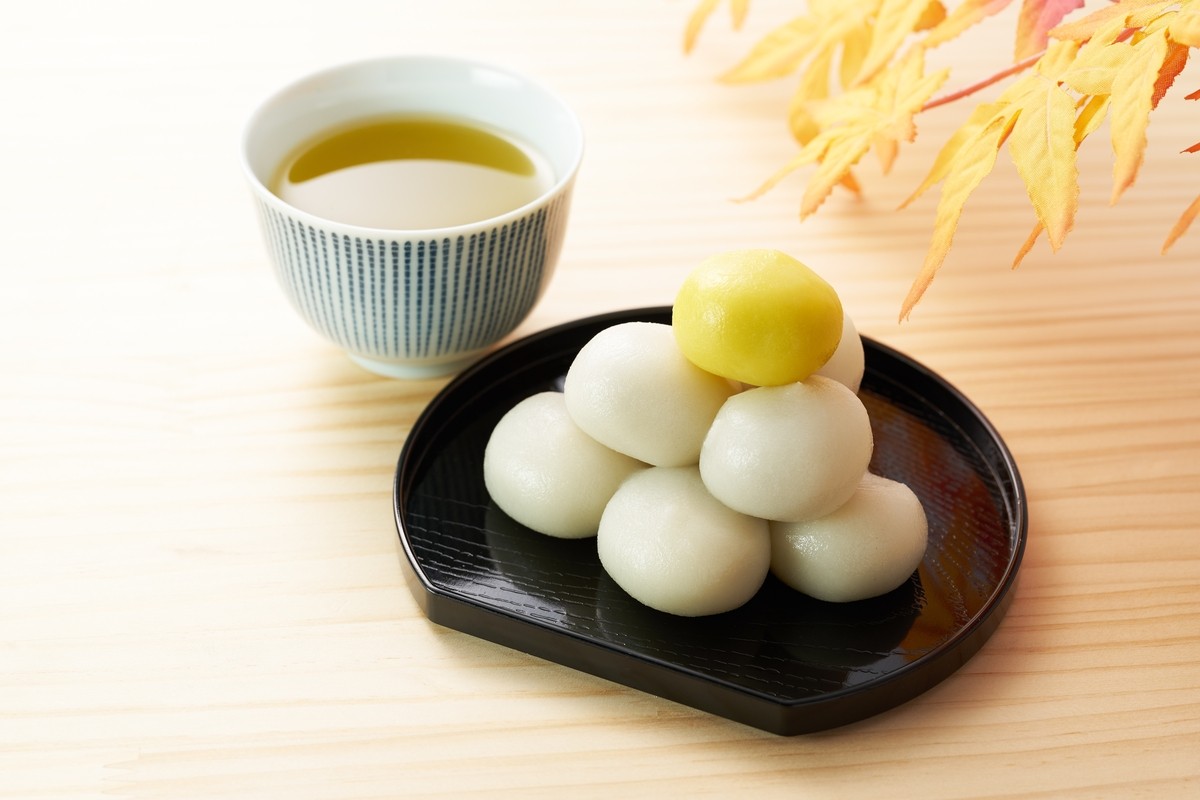
Tsukimi Dango is a traditional Japanese confectionery and an offering symbolizing gratitude for the autumn harvest and prayers for a bountiful crop in the coming season.
The custom of offering rice flour dumplings dates back to the Edo period, where people believed that by partaking in the offered Tsukimi Dango, they could receive strength from Tsukuyomi, the moon god of agriculture, ensuring their health and happiness.
Significant Differences! Characteristics of Tsukimi Dango in Kanto, Kansai, and Other Regions
While the "white round" shape is the most common form of Tsukimi Dango nationwide, the shapes and offerings differ by region.
| color | Shape | Offering Style | Alternate Name | |
| Kanto | white | Round | Stacked in a pyramid shape | ― |
| Kansai | White (with red bean paste wrapped outside) | Teardrop-shaped | Arranged one by one | ― |
| Nagoya | 3 colors (white, pink, brown) | Satoimo (taro-shaped) | Arranged one by one | ― |
| Shizuoka | white | Round with a dimple | Stacked in a pyramid shape | Heso mochi |
| Chugoku & Shikoku | White (with red bean paste, kinako, or miso paste) | Skewered | Arranged one by one on skewers | ― |
| Okinawa | White (coated with red beans on the surface) | Small, elongated | Stacked in a pyramid shape/Arranged one by one | Fuchagi |
Tsukimi Soba

Tsukimi Soba is a dish consisting of warm soba noodles topped with a raw egg. The name "Tsukimi" (meaning "moon viewing") comes from the fact that the egg yolk resembles a full moon. The egg white, when slightly cooked, is likened to clouds, while the nori (seaweed) placed under the egg represents the night sky.
While the dish is delicious as is, many enjoy it when the egg white is slightly cooked by the heat of the broth. As the egg yolk breaks and spreads, it mixes with the broth, creating a creamy and rich flavor.
Although soba became widespread during the late Edo period, it is said that Tsukimi Soba only began to be eaten after the Meiji period. This is because eggs were expensive and had potential sanitary issues at the time, making it difficult to serve them raw.
Chestnut Rice
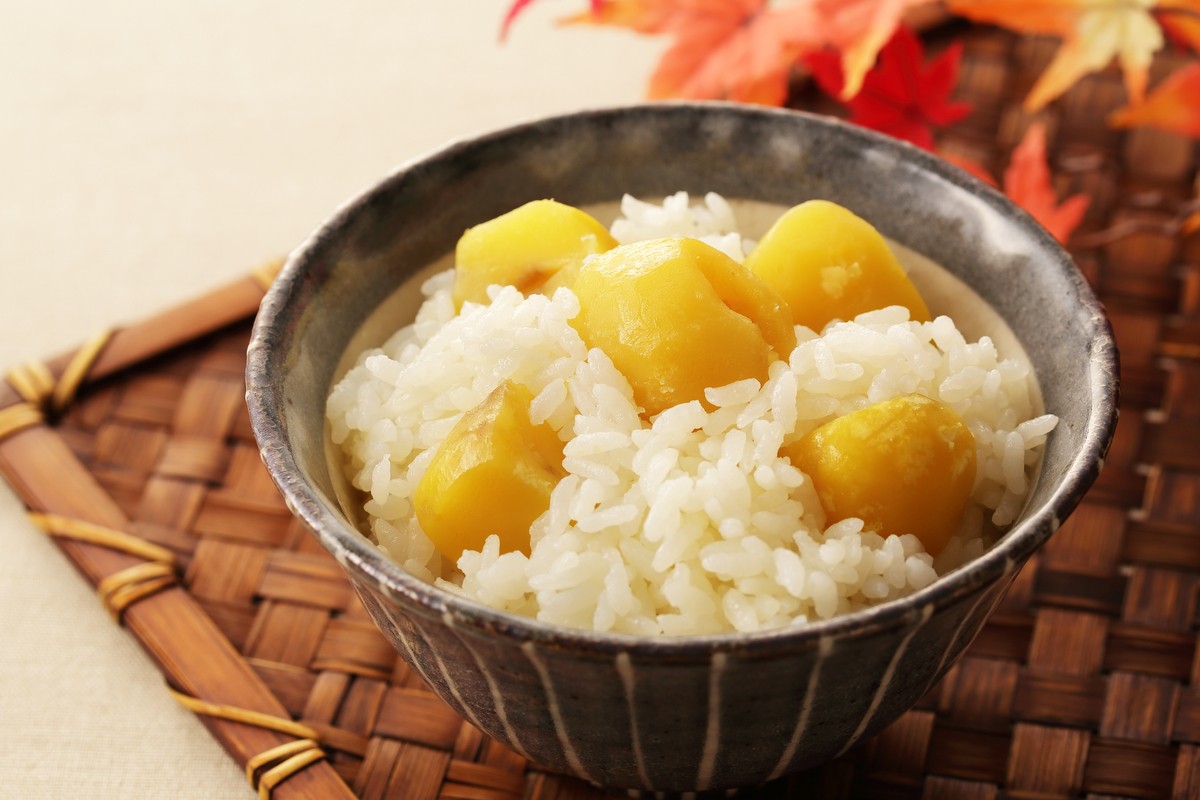
While the "Chushu no Meigetsu" (Harvest Moon) on the 15th night of the 8th lunar month primarily celebrates the rice harvest, the moon-viewing on the 13th night celebrates the chestnut harvest. Hence, the 13th night is also known as "Kuri Meigetsu" (Chestnut Moon), and it has been a tradition to offer chestnuts as part of the ritual.
Chestnuts harvested during this period are a symbol of autumn's bounty, and after offering them, they are cooked together with rice to create a delicious dish known as "kuri gohan" (chestnut rice).
Preparing chestnuts can be labor-intensive due to the thick outer "oni-gawa" (demon skin) and inner "shibu-gawa" (astringent skin) that cover the nuts. For those looking to save time, using pre-cooked sweetened chestnuts or frozen chestnuts is a good alternative.
Kenchin-jiru (Kenchin Soup)
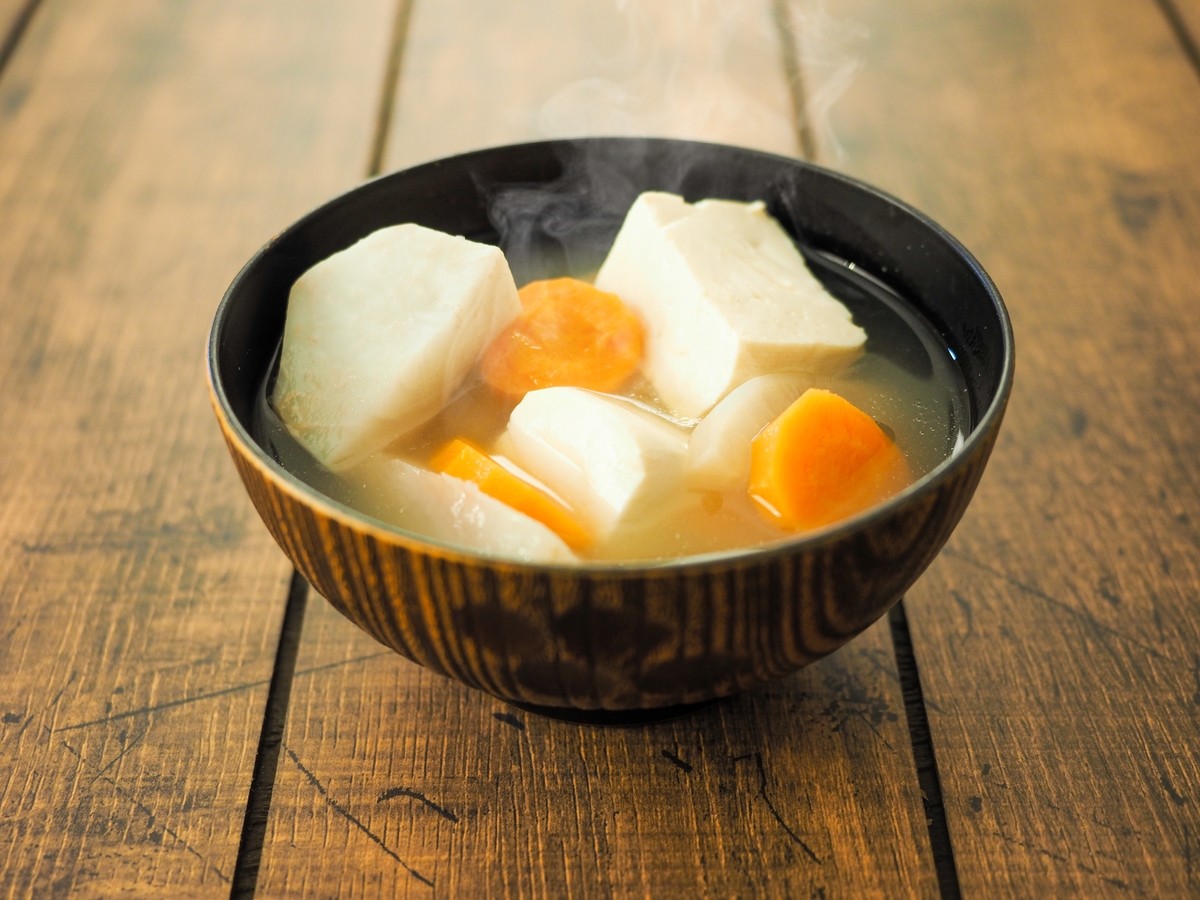
Kenchin-jiru is a traditional Japanese soup that is part of the country's culinary heritage. It is primarily known as a type of "shojin ryori" (Buddhist vegetarian cuisine), which is characterized by the absence of animal products.
The soup is made by stir-frying vegetables in oil, simmering them in a broth (usually kombu or shiitake mushroom-based), and seasoning with soy sauce or miso. The broth is typically clear, and the soup has a warm, delicate flavor that brings out the natural taste of the ingredients.
The ingredients used in Kenchin-jiru vary slightly by region and household, but it is generally a healthy dish packed with vegetables. In some areas, it is still traditional to eat Kenchin-jiru during the Harvest Moon festival.
Main ingredients
- Root vegetables like daikon (radish) and carrots
- Burdock root
- Konjac
- Tofu
- Mushrooms like shiitake and shimeji
- Satoimo (taro) or potatoes
Tsukimi Burger
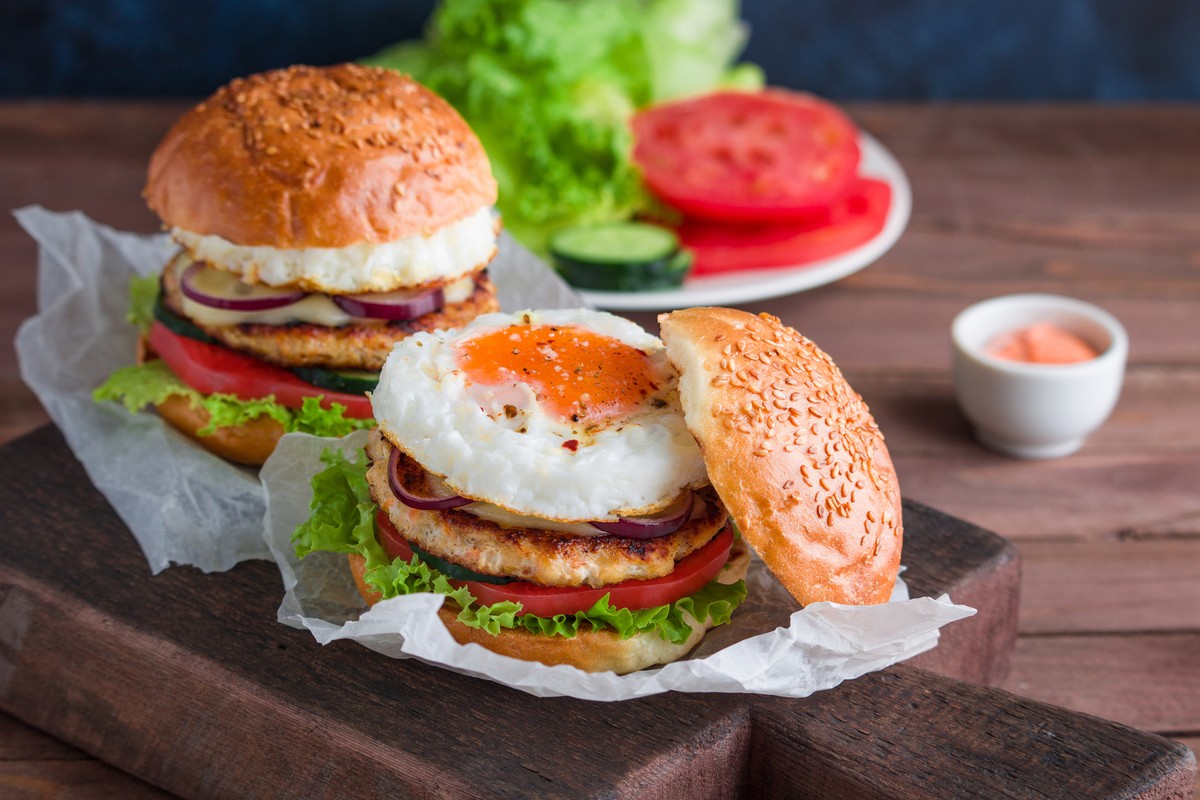
The Tsukimi Burger is a product born from the fusion of traditional Japanese customs and modern food culture. It has recently become established as an "autumn tradition" that allows people to experience the changing seasons.
The Tsukimi Burger first appeared in 1991 as a new product developed to evoke the feeling of autumn. The product quickly became popular due to its impactful name and appearance, and since its release, it has become a staple item in the autumn lineup, loved by all generations.
Each year, fast-food chains engage in what has come to be known as the "Tsukimi Wars," vying to create the best version of the Tsukimi Burger. As a result of this competition and the increased demand, egg prices tend to rise in autumn. Recently, some versions of the burger have started replacing the egg with alternatives like pineapple or mushrooms, creating a distinct twist on the traditional Tsukimi Burger.
In today’s world, where lifestyle changes and abundant entertainment options have led to the decline of moon viewing traditions, why not take this year’s Harvest Moon as an opportunity to look up at the sky and enjoy one of the delicious seasonal foods introduced above?
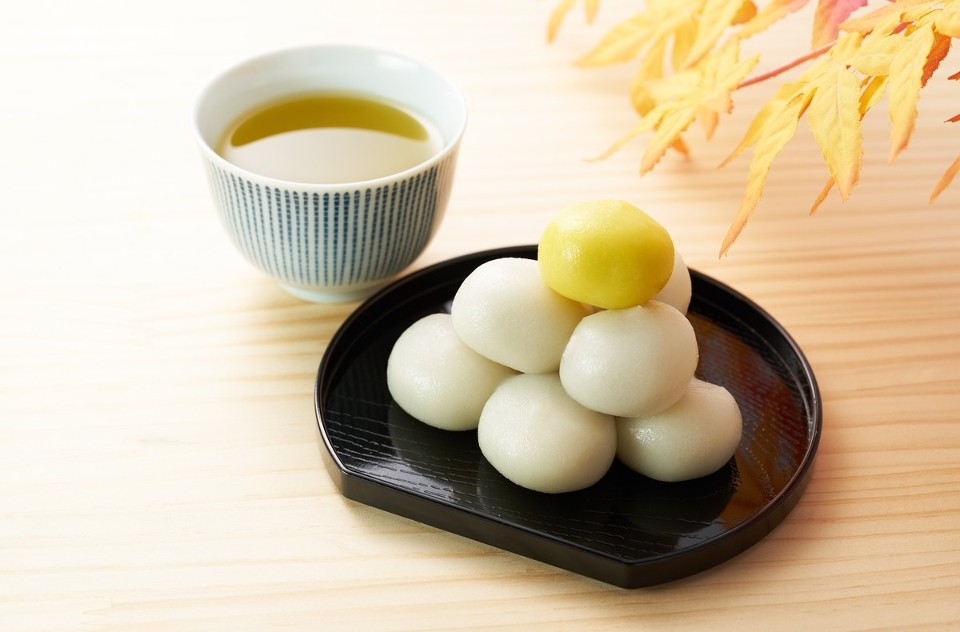

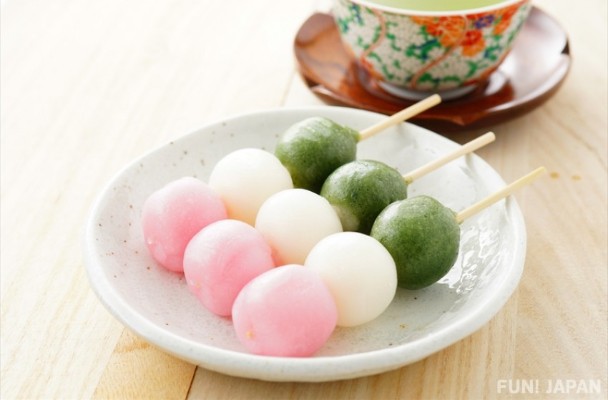

Comments